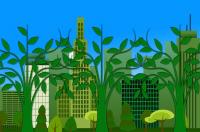Report urges governments to take urgent action, set more ambitious targets and building codes, and embed sustainability within planning systems.
.

There is the idea of ‘adaptive reuse’ of buildings – in other words, taking an old structure and using it for something other than what was originally intended:
Adaptive reuse in Sidmouth – Vision Group for Sidmouth
Exploring the Principles of ReUrbanism: Adaptive Reuse at the City Scale | ArchDaily
This is not only often done to preserve a piece of heritage:
Heritage and climate change – Vision Group for Sidmouth
Heritage and the environment in Sidmouth – Vision Group for Sidmouth
But it is also done because the greenest building is the one standing:
Architecture and climate change – Vision Group for Sidmouth
Urban design and climate change – Vision Group for Sidmouth
“… never demolish, never remove or replace, always add, transform and reuse…”
Refurbishment is the future – Vision Group for Sidmouth
Moreover, so much can be done to improve the energy efficiency of these still-standing buildings:
Decarbonising buildings – Vision Group for Sidmouth
And the architecture/design/construction industry is really interested.
A new report has just come out:
Built for the Environment report
This global report, produced by RIBA in partnership with Architects Declare, makes the case that the built environment must drastically reduce its carbon emissions to work towards net zero.
Today 38% of global energy related greenhouse gas emissions are attributable to the built environment. Our latest report, Built for the Environment, demonstrates the role the industry is playing – and must play – in tackling the climate emergency.
The report, produced in partnership with Architects Declare, brings together a cross-section of research and publications submitted by the built environment sector. Using this evidence and ahead of COP26, the report urges governments to take urgent action, set more ambitious targets and building codes, and embed sustainability within planning systems.
Recommendations in the Built for the Environment report
Governments to ensure environmental targets are science-based and fair This means reporting greenhouse gas emissions on a consumption basis, and including built environment actions and all sources of emissions within net zero plans (including Nationally Determined Contributions).
Governments to shift focus onto reducing absolute emissions As opposed to reductions per square meter of building area, or per person. Greenwashing or reliance on large offsets will not help us meet our collective goals.
Governments must both mitigate and adapt to the climate and biodiversity emergencies Nature-based solutions and traditional ecological knowledge, wisdom and technologies are central to both.
Those operating within the built environment to actively adapt practice From breaking down silos between disciplines and competencies, to communicating and sharing information, to shifting cultural ideas of beauty and design, the entire sector must adapt.
Information to be openly and widely shared This is to enable collaboration and transparent decision-making. This includes information around land, buildings, ecosystems, and infrastructure, as well as knowledge and skills.
Social justice to remain at the heart of all action This means involving those impacted by change in decision-making, and together designing social policies to facilitate a transition to a fair and sustainable built environment, taking steps to ensure unintended negative consequences are addressed quickly and fairly.